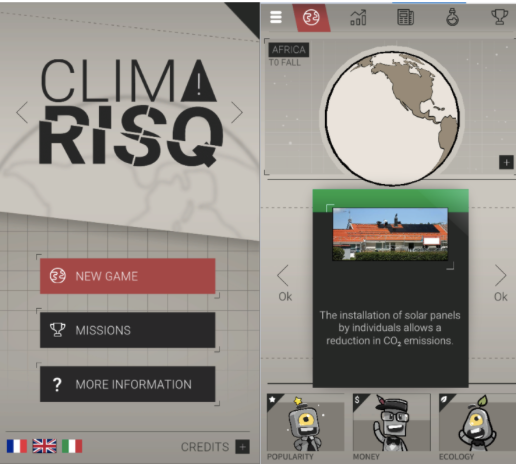Moving beyond research-as-usual: Exploring and assessing the role of geoscientists in the face of the climate and ecological emergencies
Co-organized by BG8/GM12/NH9
Convener:
Odin Marc
|
Co-conveners:
Elodie Duyck,
Rosa Rantanen,
Louise MimeauECSECS,
Pauline BonnetECSECS
Orals
|
Mon, 15 Apr, 08:30–12:30 (CEST) Room 0.15
Posters on site
|
Attendance Tue, 16 Apr, 10:45–12:30 (CEST) | Display Tue, 16 Apr, 08:30–12:30 Hall X1
To date, efforts to trigger radical transformations, whether by political, economic, or civil society actors, have overwhelmingly fallen short of the urgent actions recommended by scientific institutions such as the Intergovernmental Panel on Climate Change (IPCC) or the Intergovernmental Science-Policy Platform on Biodiversity and Ecosystem Services (IPBES). Some scholars argue that the underlying issue lies not primarily in the absence of information (Oreskes, The trouble with the supply-side model of science, 2022), but rather in the power dynamics among various stakeholders and that recognizing this is fundamental (Stoddard et al., Three Decades of Climate Mitigation: Why Haven’t We Bent the Global Emissions Curve?, 2013).
This session targets the diverse roles that geoscientists can play in accelerating the radical transformation of our society to address the current ecological crisis.
Key questions include: How to engage with civil society, stakeholders and policymakers to ensure the implementation of research findings into appropriate policies? How to assess and reduce the ecological footprint of scientific institution, as to show exemplary pathways to the rest of society? How to expand outreach and training efforts, and towards who, the general public or specific stakeholders such as elected representatives, civil servants, economic actors, or even fellow academics? How to contribute and assist legal actions against private or public entities? Should scientists engage in disruptive actions and civil disobedience to transform their own institutions and press on problematic actors, such as the fossil fuel industry?
We invite contributions that address these questions, whether from a theoretical perspective or through firsthand experiences. We are particularly interested in examples of research projects or collaborations that have attempted to assess their impact on any of the strategies given above (e.g., ecological footprints, policies, litigation, communication, or pressing on relevant stakeholders). Interdisciplinary work, spanning fields like philosophy, history, sociology, and their application to science or broader societal aspects, is highly encouraged.
08:30–08:35
5-minute convener introduction
Transdiciplinary science in the Anthropocene
08:35–08:45
|
EGU24-13761
|
On-site presentation
08:45–08:55
|
EGU24-11357
|
On-site presentation
09:05–09:10
Intermediate Discussion
Reducing the environmental footprint of science
09:20–09:30
|
EGU24-1795
|
On-site presentation
09:30–09:40
|
EGU24-17314
|
ECS
|
On-site presentation
09:40–09:50
|
EGU24-20180
|
ECS
|
Highlight
|
On-site presentation
09:50–09:55
Intermediate Discussion
Training other actors
09:55–10:15
|
EGU24-17840
|
solicited
|
Highlight
|
On-site presentation
Coffee break
Chairpersons: Elodie Duyck, Odin Marc, Rosa Rantanen
Outreach for climate litteracy
10:55–11:05
|
EGU24-11035
|
On-site presentation
11:05–11:15
|
EGU24-12554
|
On-site presentation
11:15–11:20
Intermediate Discussion
From engagement to activism
11:40–11:50
|
EGU24-9536
|
ECS
|
Highlight
|
On-site presentation
11:50–11:55
Intermediate Discussion
11:55–12:05
|
EGU24-18782
|
ECS
|
On-site presentation
12:05–12:15
|
EGU24-19960
|
ECS
|
On-site presentation
12:15–12:25
|
EGU24-15634
|
Highlight
|
On-site presentation
12:25–12:30
Final Discussion
X1.104
|
EGU24-18757
|
ECS
X1.106
|
EGU24-20093
X1.108
|
EGU24-11091
|
Highlight
